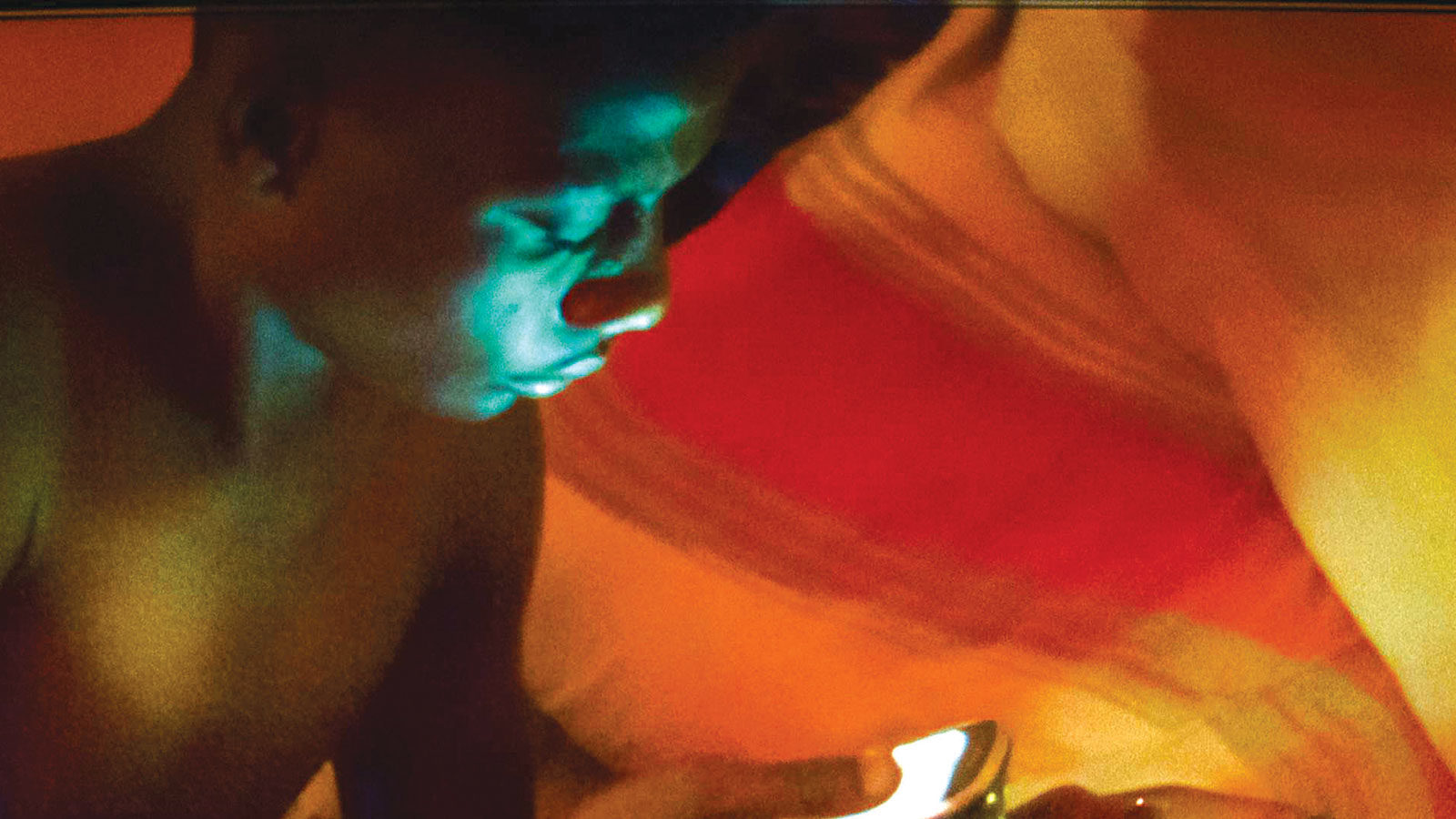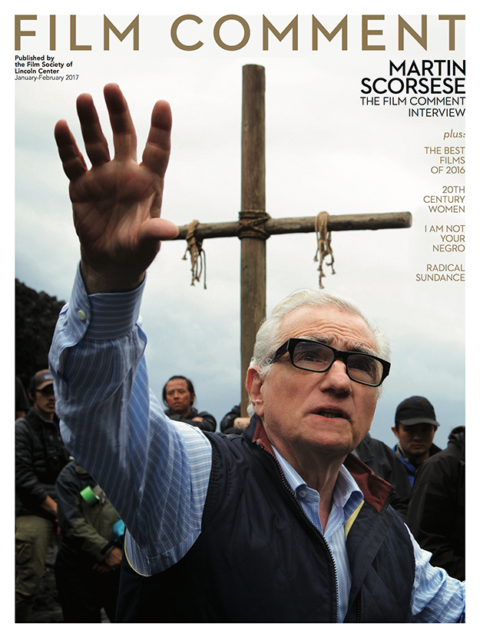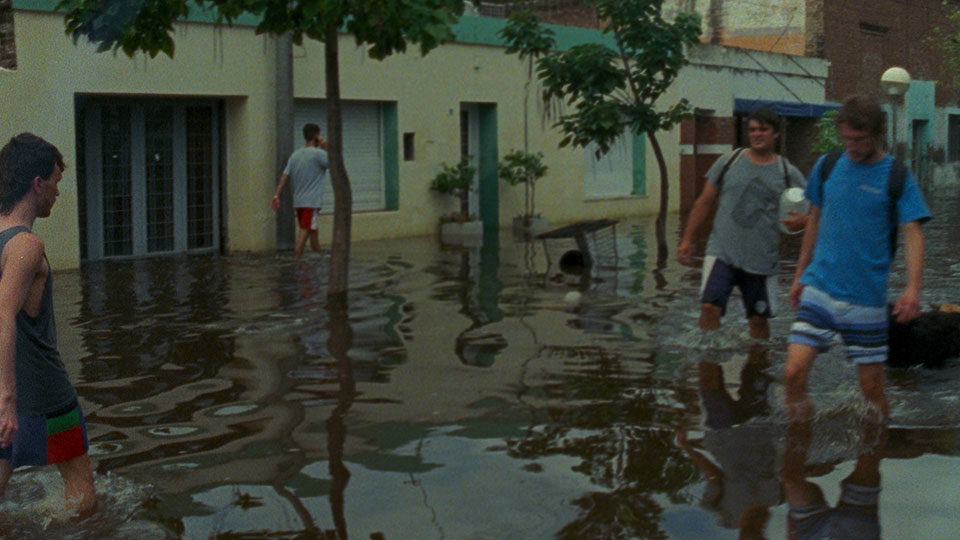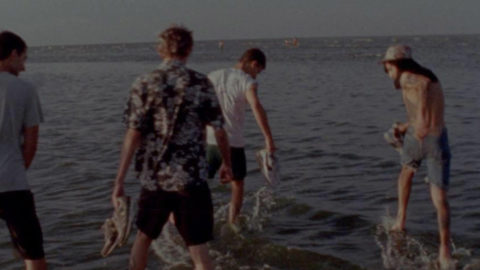
Review: The Human Surge
The 29-year-old Argentine director Eduardo Williams’s first feature—a dense and confounding documentary-fiction hybrid—moves briskly between settings, characters, and subjects, but one of its consistent subjects is the body in motion. It opens with a murky scene of a figure moving restlessly through a dark house, opening the front door to the roar of a storm, and, after a cut, wading through a flooded street outside. Throughout the film’s first hour, cramped hangout scenes are punctuated with handheld footage of people walking, pacing, or running outdoors; in its last third, the camera stalks a small cluster of characters through a forest interspersed with lagoons. Williams’s characters are almost all young and aimless, and to watch his new film is to enter the hurried, disorganized, quick-changing atmosphere in which they move.

The Human Surge is split into three episodes set, respectively, in Buenos Aires, Mozambique, and the Philippines. As we pass from chapter to chapter, we’re introduced to three small groups of friends and shuttled from one shooting format to another. The movie starts on Super 16 and ends with glossy RED digital footage; the middle section was recorded on a portable digital camera and played back on a screen from which it was then re-filmed on Super 16. This last technique yields a grainy, softened texture and an intensely vivid color palette that corresponds well—perhaps best of all the visual idioms the movie picks up and puts down—to the lives Williams’s characters lead.
In the first two sections, those characters are young people—mostly men—pressed for cash and inseparably attached to their laptops and phones. Both groups resolve to make money charging for live sex feeds on their webcams (we meet the second group of men when the camera advances onto a computer screen on which they’re displayed). But the experiment makes them uncomfortable, and so they keep drifting around their respective home cities while Williams’s camera lurches behind or around them, surveying their movements like a disembodied hanger-on.

The transition between the second and third episodes is the movie’s show-stopping moment, and it suggests Williams’s readiness to commit to odd, gutsy ideas. One of the men at the center of the Mozambique episode urinates on an anthill during a camping trip. The camera proceeds closer and closer into the anthill, finds an opening, and spends the next five minutes in a dark, luminous pocket under the earth, communing in extreme close-up with the insects who live there. Eventually it ascends to follow a handful of ants as they crawl onto a hand that soon brushes them away, then takes up a broken phone to send a text in Tagalog. The next shot is a breathtaking, wide digital image of a meadow in the Philippines overlooked by a range of mountains and a cloudy sky.
Williams is interested in how, as a filmmaker, you can pull off sudden shifts like these in format, tone, movement, and scale—how you can turn from a scene of inertia to one of stuttering momentum, or move from the microscopically small to the majestic and wide, or pass from continent to continent in a matter of seconds. This interest bears on another question central to this movie, concerning how regional or national cinemas should adapt to an interfaced digital world. (The movie’s last scene shows a line of lab workers in sanitary masks assembling computers.)
Some of Williams’s characters are inclined to zonked-sounding prognostications on this last subject: one says, of TV shows, that “they can be received at any point in the galaxy, man.” Taken as a set of proposals about globalization and digital life, The Human Surge can seem similarly vague, suggesting a mess of intriguing questions and leaving us to put them in order. As an immersive, unpredictable sensory experience, on the other hand, this is a prodigious accomplishment from a filmmaker full of ideas about rhythm, texture, and scale. It leaves one anxious to see what he’ll do next.
Max Nelson is an editorial assistant at The New York Review of Books.




